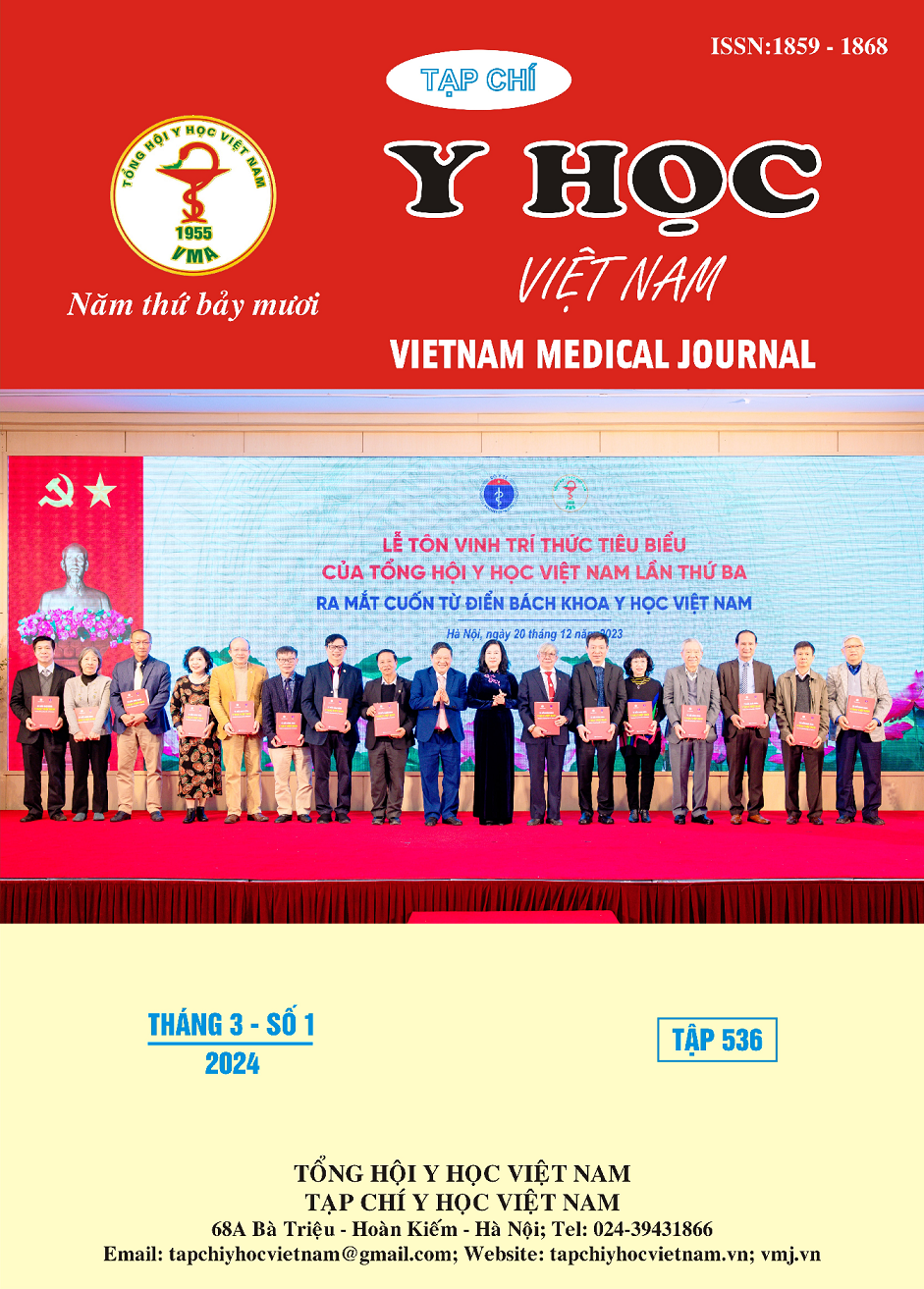CLINICAL ANALYSIS OF SALIVARY GLAND CANCERS
Main Article Content
Abstract
Introduction: Salivary gland cancer is a group of diseases with few characteristic clinical manifestations but complex histopathological classifications, making diagnosis challenging. The objective of the research is to describe and analyze the common epidemiological and clinical features of salivary gland cancer. Materials and methods: Retrospective analysis of 111 cases of salivary gland cancer with complete medical records, good quality tissue samples for histopathological examination, and treatment at the Oncology Hospital in Ho Chi Minh City from January 1, 2016, to December 31, 2017. Results: The majority of salivary gland cancers occured in individuals aged 40 and above (65.7%), with an average age of 47.1 ± 17.3 years. The male-to-female ratio was 1:1.52. The most common site of cancer was the parotid glands (59.5%) and a large number of tumors exhibited a firm and well-defined consistency (86.5%). Most salivary gland cancers had more clearly defined boundaries compared to those in the minor salivary glands. Tumors in the minor salivary glands were mostly non-mobile (92%), while non-mobile tumors in the major salivary glands were less prevalent (23.3%). The disease was primarily detected within one year (77/111 cases; 70%), with an average duration of 30.2 ± 56.2 months. Swelling or a mass in the affected area was the main symptom prompting patients to seek medical attention (90.1%). The proportion of tumors classified as T1 and T2 is 41.5%, while T3 and T4 tumors account for 58.5% of cases. Most salivary gland cancers (59.4%) were diagnosed at stage III (15.3%) and IV (44.1%). The most common type of salivary gland cancer was mucoepidermoid carcinoma (53.2%), followed by adenoid cystic carcinoma (23.4%). Among these types, mucoepidermoid carcinoma predominantly occured in the parotid glands (39/66 cases; 59.1%) and submandibular gland (10/18 cases; 55.6%). However, both types of carcinomas were nearly equal in prevalence in the sublingual gland (each accounting for 1/2 cases; 50%) and minor salivary glands (9/25 cases; 36% for adenoid cystic carcinoma and 8/25 cases; 32% for mucoepidermoid carcinoma). Conclusions: Salivary gland cancer commonly occured in the parotid glands, more frequently in females than males, and in individuals over 40 years of age. The most common type was mucoepidermoid carcinoma, followed by adenoid cystic carcinoma.
Article Details
References
2. Bjørndal K., et al. (2011), "Salivary gland carcinoma in Denmark 1990-2005: a national study of incidence, site and histology. Results of the Danish Head and Neck Cancer Group (DAHANCA).", Oral Oncology, Vol.47(7), pp.677-682.
3. Da Silva Leorik Pereira, et al. (2018), "Salivary gland tumors in a Brazilian population: A 20-year retrospective and multicentric study of 2292 cases", Journal of Cranio-Maxillofacial Surgery.
4. Ettl T., et al. (2012), "Salivary gland carcinomas", Oral Maxillofac Surg, Vol.16(3), pp.267-83.
5. Fu Jin-Ye, et al. (2019), "Salivary gland carcinoma in Shanghai (2003-2012): an epidemiological study of incidence, site and pathology", BMC cancer, Vol.19(1), pp.350-350.
6. Parkin D. M., et al. (2002), Cancer Incidence in Five Continents, International Agency for Research on Cancer, France, pp.781.
7. To V. S., et al. (2012), "Review of salivary gland neoplasms", ISRN Otolaryngol, Vol.2012, pp.872982.
8. Yamada S. I., et al. (2018), "Significant prognostic factors affecting treatment outcomes of salivary gland carcinoma: a multicenter retrospective analysis", Odontology, Vol.106(1), pp.96-102.


